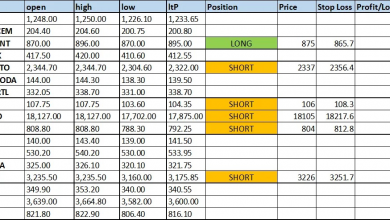Upstox Brokerage Calculator Review

Are you looking for a simpler way to gauge how much you incur when you trade via the Brokerage Upstox? The renowned tool does exactly that. Built for the everyday trader, this calculator also comes in handy when calculating Demat transaction charges, securities transaction tax, GST and SEBI charges, duty charges, and most importantly, loss profit margins. In this review, we dive into a step-by-step guide for purchasing and using an Upstox calculator, plus everything in between.
Do you Need to Buy the Upstox Calculator Brokerage?
The answer to this question is a resounding yes! Any avid online trader certainly requires this Upstox calculator for the sole purpose of understanding brokerages. More so, having the real perspective of the overall profit or loss you’re making from your online trades. You might ask yourself,” Can’t I just use a normal calculator?”. Well, the thing is, you can’t. This is because the final result of your profit or loss is based on small components that are charged differently by brokerage firms.
Unfortunately, despite having an obligation to disclose, most stockbrokers conceal some of these menial charges in the initial stages of your engagement for fear of scaring you away with the inflated overall trading charges. For This reason, using a specialized calculator that’s suited to capture both major and minor charges is highly recommended. With this calculator, you’re able to perform all kinds of calculations and for varying asset classes, some of which include:
- Upstox Brokerage Equity Intraday
- Upstox Future Brokerage
- Upstox options Brokerage
The key advantages of this popular calculator are its simplicity and transparency, which we explore in the next section.
How Do You Use The Upstox Brokerage Calculator?
For beginners, performing any calculation on the Upstox calculator is easier than you think. The fundamental concept is simply taking the number of shares you buy or sell, multiplying by the price of a single unit of stock, and finally multiplying your answer by the brokerage percentage. Once you key in these inputs, all you’re required to do next is click the “calculate” button. This formula is largely applicable in both intraday and delivery trading brokerage calculations. Having mastered this, it will be easier to follow this step-by-step guide useful for grasping the functionalities of the brokerage Upstox calculator.
Here’s what You’ll Need
As mentioned above, the inputs you’ll need to table to obtain a wholesome report for the charges tied to your investment stock are the stock’s buying and selling prices, plus the number of shares you intend to trade.
With this, you’ll end up with crucial information such as the Stamp duty, SEBI, Total brokerage and tax, and total profit and loss. Having known that we can now move to the most important part.
Follow These Steps To Use The Calculator
Step 1: On the calculator, access the Upstox homepage and proceed to the support section. When you get there, click the button “tools and calculators.”
Step 2: After smashing the learn more section, key in the information that will aid in calculating things like stamp duty charges, which tend to fluctuate depending on the state you hail from. The information required is your primary state of residence.
Step 3: Beginning building your trade-specific portfolio
Step 4: Proceed by selecting important components like currency, the exchange, and the segment type.
Step 5: The next question is to ask yourself what type of trade you want to carry out. For instance, Is it an intraday or overnight (delivery) trade? Input this in the calculator
Step 6: Key in the price of the stock and the number of units of stocks you intend to trade
Step 7: Click calculate
What Else Should You Know When Using The Upstox Calculator Brokerage?
Once done, these series of steps should lead you towards displaying the breakeven price. In the simplest terms, a breakeven price is a point at which you neither make profits nor incur a loss. Why is it important? The thing is, knowing your breakeven price helps you determine how much you’ll need to sell your shares to incur the desired profit. After this, the next detail you need to punch in is the selling price, and just like that, you’ll be done!
Another important element to note is that when using the Upstox brokerage calculator, you can make a comparison with how other traders from other markets are trading. For example, you can compare the costing charges for different brokerages based on currency and equity futures. This enables you to make informed investment decisions that you won’t regret later.
Which Asset Classes Does the Upstox Calculator Brokerage Cover?
In the final part of this review, we’ll look at three of the asset classes that this online calculator caters for. But before we answer this, one definition you need to master is equity. For starters, Equity Upstox is simply the stock or security owned by an investor and traded on the Upstox brokerage platform.
We’ll also illustrate how this calculator can help you determine the loss profit margins for these asset classes mentioned in this section. In a nutshell, some of the asset classes covered by the Upstox calculator include:
- Equity Deliver
Also known as delivery-based trading, this is the type of trading whereby an investor purchases a portion of shares and leaves them in their Demat account for a significant period of time before selling at a profit. Calculating this segment requires you to click the equity tab on the calculator, then click the delivery section. Also, did you know that Upstox doesn’t charge anything to conduct equity delivery trades on their platform? This is a great option if you want to be lean with your trading costs. Keep in mind that the platform still offers discount coupons that help you save on charges. And maximize your profits.
- Equity Intraday
On the other hand, equity intraday involves buying and selling stocks on the same day. To calculate this on the Upstox calculator, select the equity tab, then click the intraday option. Actually, you notice that the calculation of all these options follows a similar pattern that you can use for all other asset classes. Unlike the equity delivery option, this is one that isn’t free. Upstox charges a fixed cost of Rs.20 for each trade.
- Commodity
Finally, you can also calculate commodities using this calculator. For starters, the commodity in the context of the stock market refers to hard goods, usually natural resources like gold, that can be bought, sold, or exchanged for other resources. Calculating the commodity segment simply requires you to click the commodities tab on the calculator.
The rest of the asset classes you can use to calculate using this calculator are equity futures, currency futures, and currency options, all of which have tabs indicated on the calculator.
Bottomline
As we can see, the Upstox calculator brokerage is an essential tool to include in your trading arsenal. The benefits are quite numerous, with the main ones being an easy-to-follow functionality, the ability to compare chargers with other markets, and quick. Also, this calculator can determine the broker charges and loss profit margins of virtually any asset class. Whether you need the context of an Indian market or a British market, it offers transparency for both. If you’ve been contemplating whether to start using this calculator or not, take this as a green light to actually do it.


